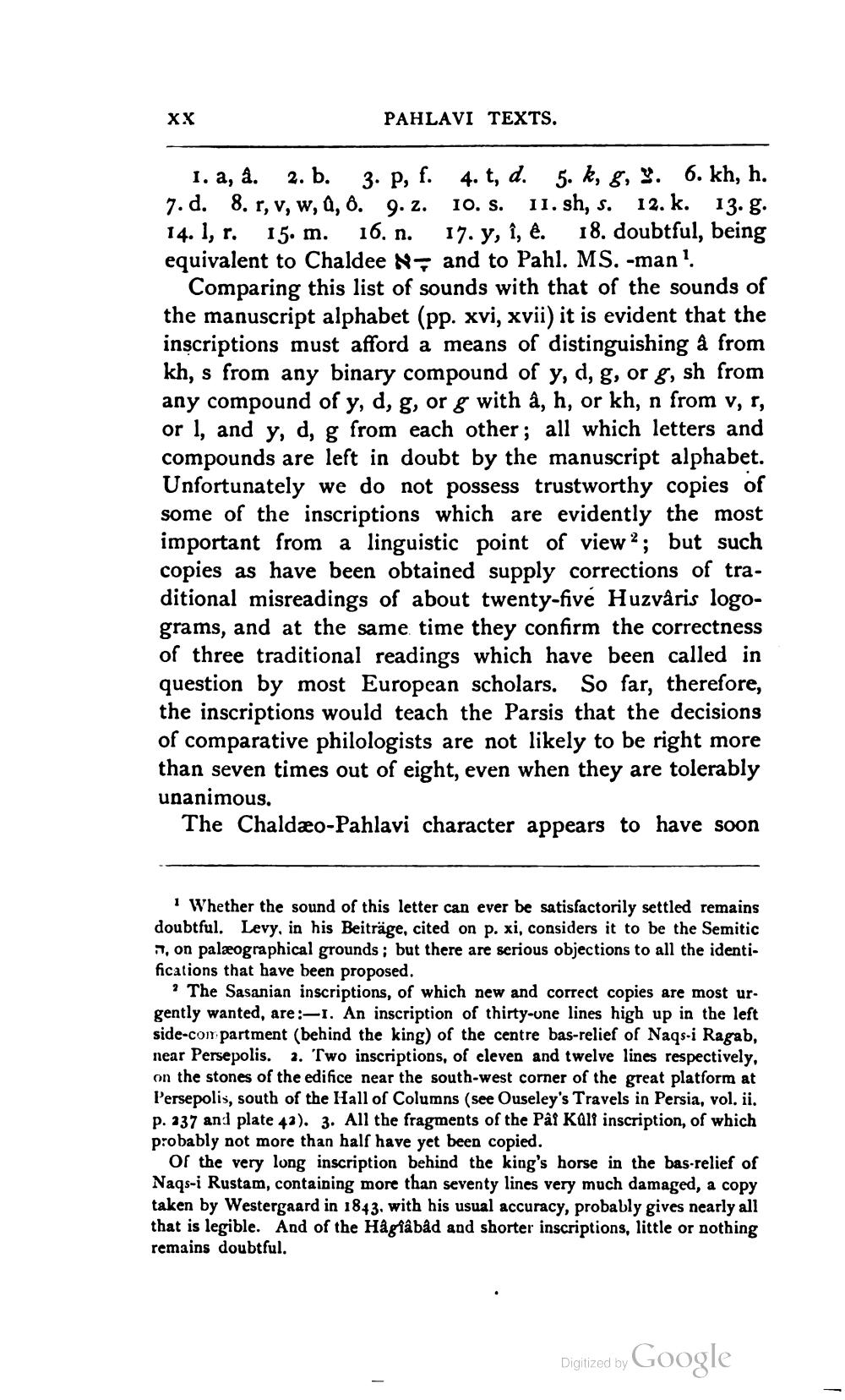________________
XX
PAHLAVI TEXTS.
1. a, a. 2. b. 3. p, f. 4. t, d. 5. k, 8, 5. 6. kh, h. 7.d. 8. r, v, w, a, 8. 9.2. 10. s. 11. sh, s. 12.k. 13. g. 14. I, r. 15. m. 16. n. 17. y, î, e. 18. doubtful, being equivalent to Chaldee , and to Pahl. MS. -man!
Comparing this list of sounds with that of the sounds of the manuscript alphabet (pp. xvi, xvii) it is evident that the inscriptions must afford a means of distinguishing a from kh, s from any binary compound of y, d, g, or g, sh from any compound of y, d, g, or g with à, h, or kh, n from v, r, or 1, and y, d, g from each other; all which letters and compounds are left in doubt by the manuscript alphabet. Unfortunately we do not possess trustworthy copies of some of the inscriptions which are evidently the most important from a linguistic point of view?; but such copies as have been obtained supply corrections of traditional misreadings of about twenty-fivé Huzvāris logograms, and at the same time they confirm the correctness of three traditional readings which have been called in question by most European scholars. So far, therefore, the inscriptions would teach the Parsis that the decisions of comparative philologists are not likely to be right more than seven times out of eight, even when they are tolerably unanimous.
The Chaldæo-Pahlavi character appears to have soon
Whether the sound of this letter can ever be satisfactorily settled remains doubtful. Levy, in his Beiträge, cited on p. xi, considers it to be the Semitic ,, on palæographical grounds; but there are serious objections to all the identifications that have been proposed.
? The Sasanian inscriptions, of which new and correct copies are most ur. gently wanted, are:-1. An inscription of thirty-one lines high up in the left side-com partment (behind the king) of the centre bas-relief of Naqs-i Ragab, near Persepolis. 2. Two inscriptions, of eleven and twelve lines respectively, on the stones of the edifice near the south-west corner of the great platform at Persepolis, south of the Hall of Columns (see Ouseley's Travels in Persia, vol. ii. p. 237 and plate 43). 3. All the fragments of the Pâi Kali inscription, of which probably not more than half have yet been copied.
or the very long inscription behind the king's horse in the bas-relief of Naqs-i Rustam, containing more than seventy lines very much damaged, a copy taken by Westergaard in 1843. with his usual accuracy, probably gives nearly all that is legible. And of the Hagiabad and shorter inscriptions, little or nothing remains doubtful.
Digitized by
Digitized by Google




